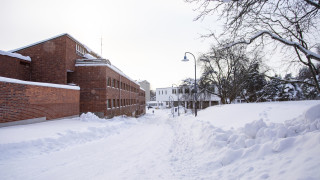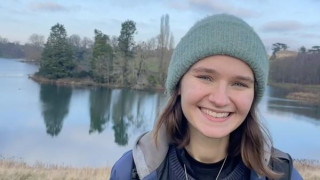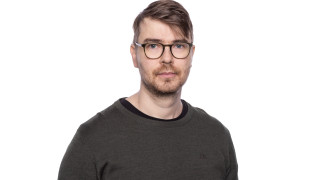New Horizon Europe project launched to safeguard biodiversity and carbon-rich forest networks in a changing climate

Collaboration with the people who depend on and manage forests is a key component of the project. Policymakers, forest owners and managers, conservationists, and selected industry experts involved in timber production, eco-tourism, and forest-based bioeconomy will be directly involved in shaping solutions. This will take place through regional case studies containing embedded Living Labs, as well as an EU-level Policy Lab.
"By combining cutting-edge science with hands-on collaboration, we can make a real impact and safeguard the future of Europe’s forests," says project coordinator Jukka Forsman, Research Professor at the Natural Resources Institute Finland; "SafeNet is not just about studying forests - it is about working with the people who rely on them to find solutions that balance conservation, climate adaptation, and sustainable use."
SafeNet will use the latest scientific methods, such as biodiversity monitoring, advanced modelling, and remote sensing, to understand how climate change and land use are affecting Europe’s forests. Conservation and management strategies will be tested in case studies located across a range of forest ecosystems. These include Mediterranean forests and fragmented landscapes in Spain and Germany, as well as temperate forests in Romania and Finland, all managed under long-term integrated practices. Stakeholders from each case study area will participate in regional living labs and play an active role in co-designing solutions tailored to their specific landscapes, ensuring that SafeNet’s research leads to practical and effective strategies for safeguarding forests.
“Integrating anticipatory conservation strategies and commercial management of forests and habitats is essential for safeguarding species communities under climate change”, says SafeNet co-coordinator Mikko Peltoniemi, Research Professor at the Natural Resources Institute Finland.
The University of Jyväskylä is involved in the project and their responsibility is predicting the current and future diversity of primary and old-growth forests. The aim is to optimise community distribution models to predict the diversity of primary and old-growth forests under different climate and forest scenarios.
SafeNet researchers will study how species move and how ecosystems shift to predict where forests might act as climate refuges in the future. This will help identify the best ways to protect biodiversity and maintain healthy, carbon-rich forests. Building on these insights, SafeNet will develop effective management and conservation measures, such as maintaining ecological corridors to enable species to move along with the shifting ecosystems and temperature ranges. In the long term, this will help species adapt to new environmental conditions.
By bringing together cutting-edge science and real-world expertise, SafeNet will provide the knowledge and tools needed to strengthen EU conservation policies, helping forests stay resilient, diverse, and full of life for generations to come.
At the University of Jyväskylä, the project is led by Academy Professor Otso Ovaskainen and Associate Professor Nerea Abrego. Postdoctoral researchers Fatima Zaidi and Mira Kajanus are also participating in the project.
SafeNet (Grant Agreement No. 101181981, SafeNet) launched on 01 February 2025 and will run for four and a half years. It is coordinated by the Natural Resources Institute Finland (Luke) and comprises a multi-actor, transdisciplinary team of experts from 14 organisations from 11 countries.
Further information:
-
Project coordination: Natural Resources Institute Finland (Luke): https://www.luke.fi/en
-
Jukka Forsman, jukka.forsman@luke.fi
-
Mikko Peltoniemi mikko.peltoniemi@luke.fi
-
Jacqueline Moustakas-Verho jacqueline.moustakas-verho@luke.fi
-
Postdoctoral Researcher Mira Kajanus, mira.h.kajanus@jyu.fi, +358503200535
-
Predictive Community Ecology -tutkimusryhmä: https://www.jyu.fi/en/research-groups/predictive-community-ecology-group








